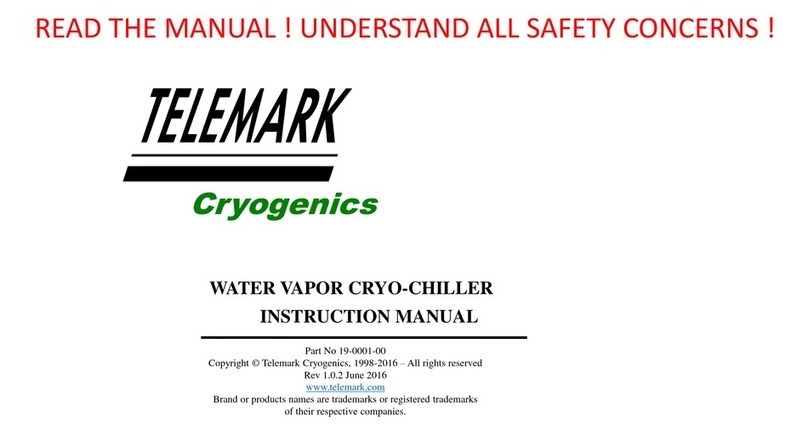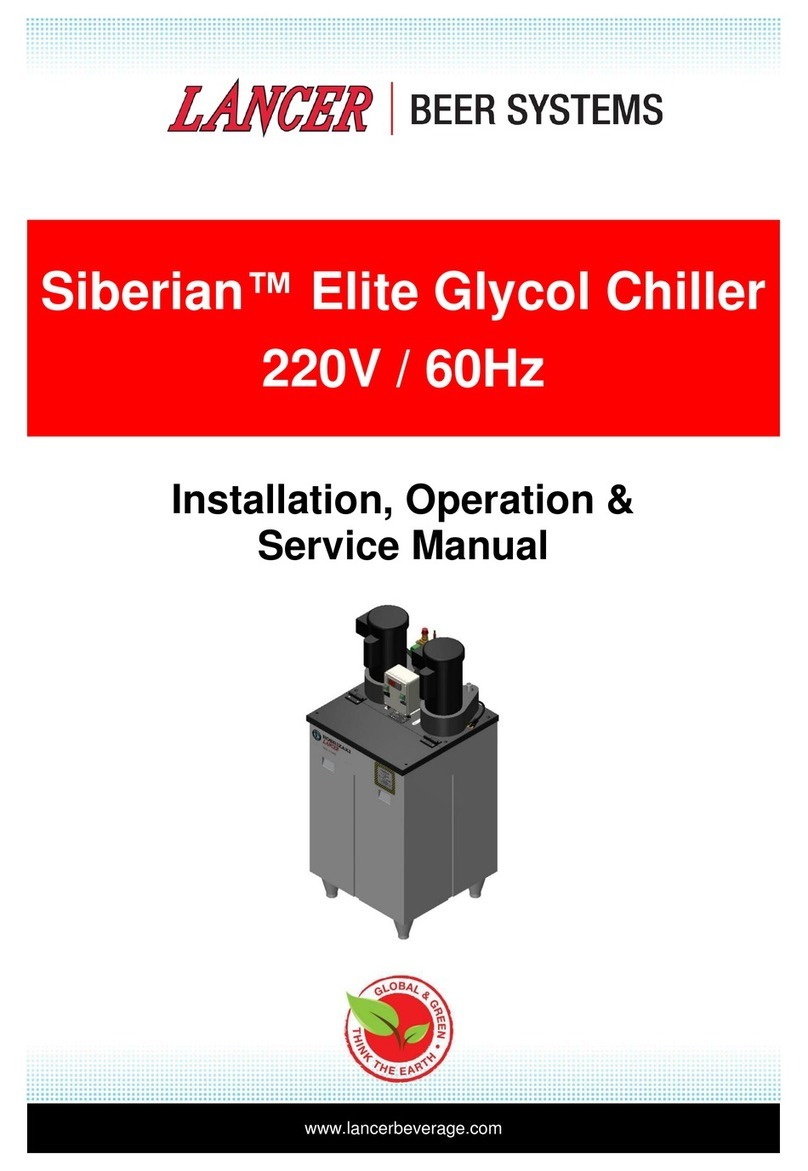
Page 5 of 5
TVP Manual (full) March 2007 CE rev 03.doc
as viewed from right hand side.
(10) the refrigeration syste contains a ixed blend of refrigerants and polio-ester oil. These
do not present acute health risks it is essential that the following basic precautions are
followed:
(a) always wear eye protection.
(b) always wear surgical type rubber or latex gloves.
(11) the syste contains specific hazards, which present a significant danger to personal
safety
(a) high pressure refrigerant gases, are a significant frostbite hazard.
(b) refrigerant gases will cause asphyxiation followed by death in confined areas.
(c) refrigerant gases, which if exposed to high te peratures deco pose to for very
toxic by-products – never s oke in the vicinity of a TVP or any other si ilar syste
including the gas cylinders.
CAUTIONS
The phrase Caution indicates a risk of da age to the product or associated plant and
achinery if the provisions are not followed carefully.
(1) Tele ark will not be responsible or liable for either direct or consequential personal
injury or loss clai s arising fro the isuse of the product.
(2) Unit contains pressurised gas. Do not open hand valves until syste is connected to a
Cryocoil, which has been checked for leaks. Do not connect the syste to other syste s
unless their design and application has been approved by the anufacturer.
(3) Closure of the hand valves whilst the syste is at cryogenic te peratures ay da age
the valve seats and invalidate the syste s warranty. It ust only be atte pted on a
cryogenically cold syste in the case of an e ergency, which is causing gross leakage fro
the Cryocoil or refrigerant lines.
(4) Do not connect the TVP to an existing Cryocoil without insuring that the Cryocoil will
accept the operating pressure of the TVP syste and that the whole syste has been fully
leak checked. Failure to do so could da age the coil and the vacuu syste .
(5) The Cryocoil should be no less than 1/2 inch or 13 away fro the cha ber wall or
any other object including other parts of the Cryocoil. Failure to co ply will reduce efficiency.
It is bad practice to ount the Cryocoil directly onto a etal plate.
(6) Access to two sides ust be aintained: The front/control panel and the right side
cooling water/refrigerant line/power/re ote control points. No such require ents are
necessary for the left side or back of the TVP unit. Although a clearance of 70 to allow the
door to open fully is required on the left hand side of the unit.
(7) The correct orientation of the flow is essential if the full potential of the unit is to be
realised:
Inlet to coil on the right }
Outlet fro coil on the left }
(8) The TVP is phase sensitive, if connected in the wrong orientation the unit will not
operate correctly. No da age can be caused by incorrect orientation of the phases.
(9) Poor water vapour pu p perfor ance is often caused by poor insulation or by water
collection on the refrigeration lines.




























